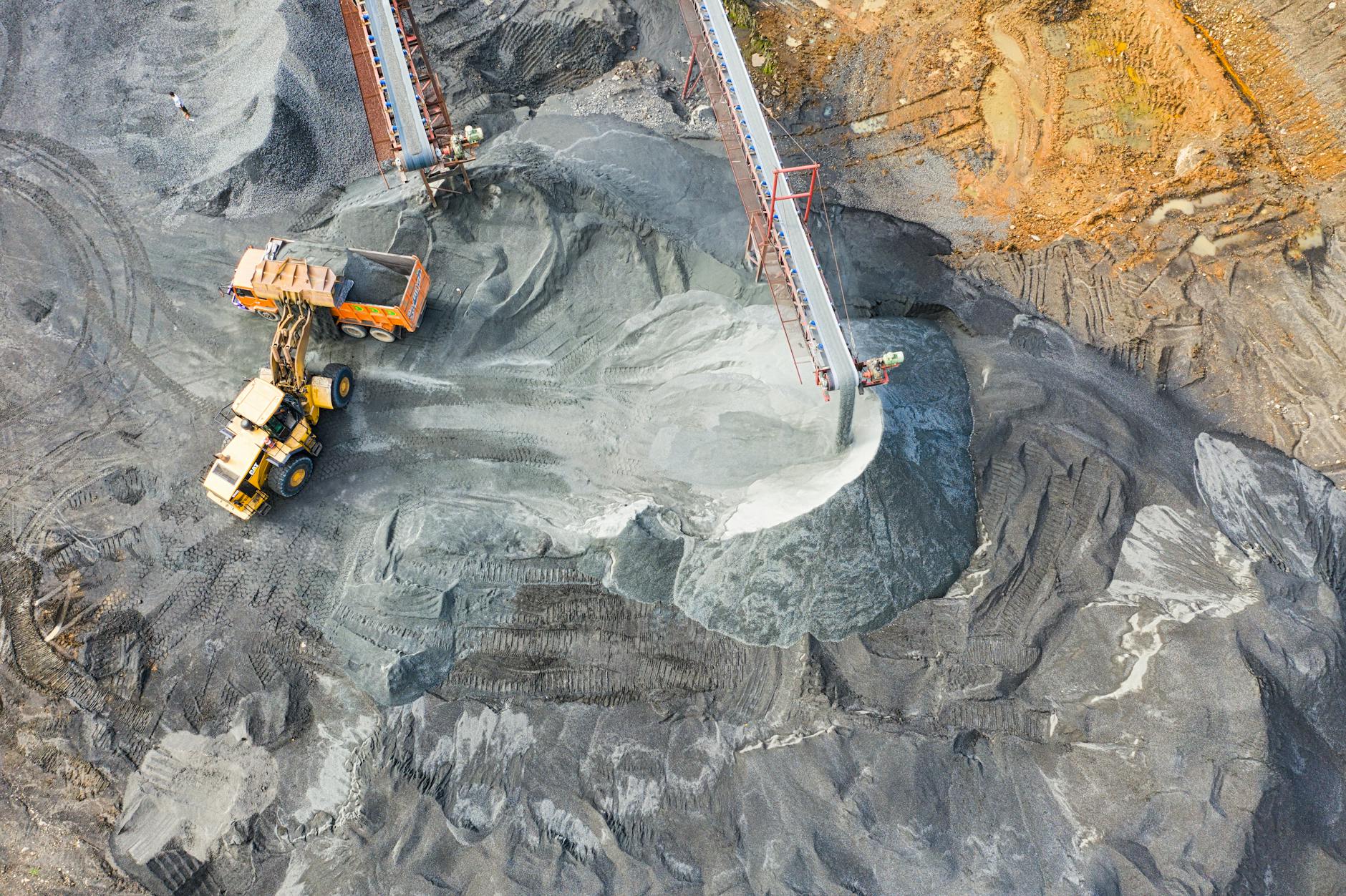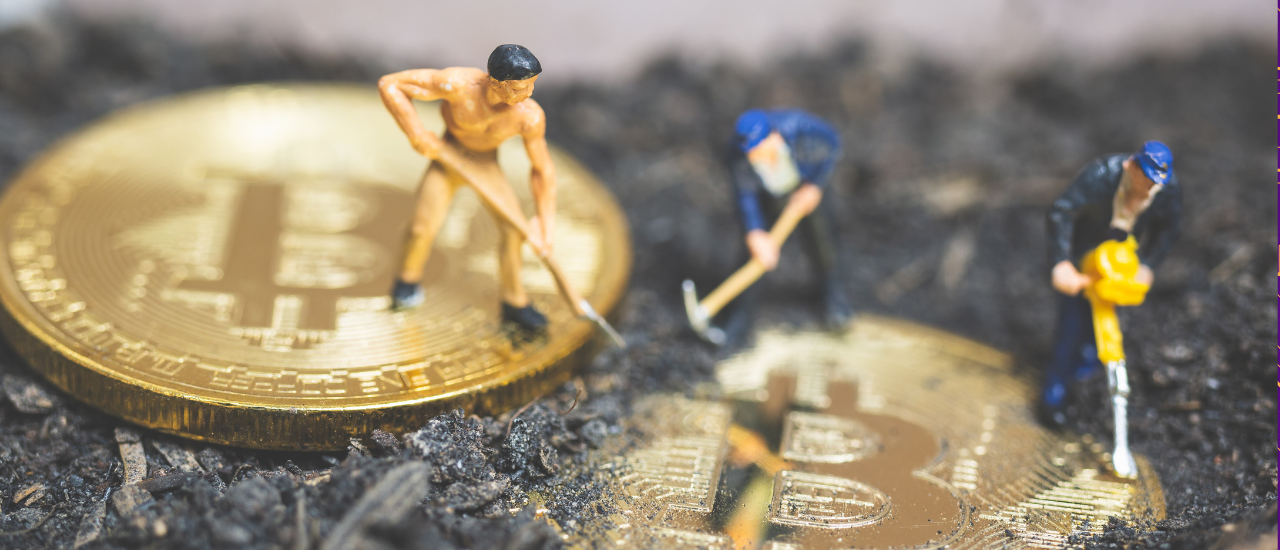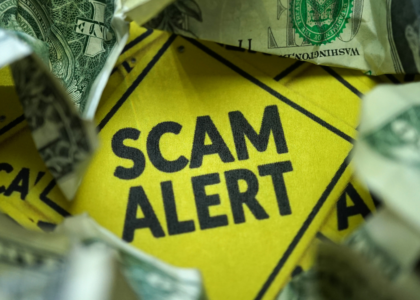Mining cryptocurrency might sound intimidating, but it’s simpler than you think. At its core, mining is the process that powers crypto networks, verifying transactions and creating new coins. For beginners, it’s also a way to earn cryptocurrency without buying it outright. However, with rising competition and energy costs, it’s not without its challenges. In this guide, we’ll break down what you need to know to get started, from the basics of how mining works to tips for making it profitable. Learn how to start cryptocurrency mining with the right hardware and software setup.
Understanding Cryptocurrency Mining
Cryptocurrency mining is a big piece of the puzzle for anyone entering the crypto space, especially if you’re considering becoming a miner. It’s not just about the how—it’s about understanding the why. Let’s break it down into manageable pieces to set the stage for your crypto mining journey. Discover the essential steps on how to start cryptocurrency mining profitably.
What is Cryptocurrency Mining?
Cryptocurrency mining is the process of validating transactions and adding them to a blockchain, which serves as a decentralized ledger. To picture it, think of blockchain as a digital logbook containing all transactions ever made in a cryptocurrency network. When you mine, your computer competes to solve complex mathematical puzzles. Solving the puzzle confirms a block of these transactions, and as a reward, the miner earns cryptocurrency. Understand the power requirements before you begin how to start cryptocurrency mining.
This process uses the Proof-of-Work (PoW) protocol, which essentially makes miners “work” by performing billions of calculations to find the solution. It’s a bit like a lottery system, where the computer solving the problem first gets the reward. Learn more about how mining works here.

Photo by Leeloo The First
Why Mining is Important for Cryptocurrencies
At its core, mining is much more than earning cryptocurrency. It’s what keeps the entire system secure and decentralized. Here’s why mining matters:
- Securing the Network: Through mining, validators ensure transactions are authentic and blocks cannot be altered. This prevents hacking and fraud.
- Validating Transactions: Miners review and approve transactions by solving computational puzzles, adding a new layer of reliability.
- Decentralization: Since mining is done by individuals or groups across the globe, no single entity controls the blockchain. This decentralized nature is a key benefit over traditional banking systems. Find out more about why mining is critical to cryptocurrency operations.
Without miners, cryptocurrencies like Bitcoin would lack the infrastructure they need to function effectively. In this way, miners aren’t just participants—they’re the backbone of the network.
Types of Mining: Solo vs. Pool Mining
When it comes to mining, you can go two ways: solo mining or joining a mining pool. Your choice depends on your goals, resources, and how you like to work.
Solo Mining
Solo mining means you operate independently, relying solely on your hardware and resources to find new blocks. This is typically suited for miners with substantial computing power.
Pros:
- All rewards go to you. No sharing.
- Complete control over your operations.
Cons:
- High competition and difficulty levels.
- The process could take months or even years to mine a single block.
Pool Mining
Pool mining involves teaming up with other miners to combine resources. Together, you work toward finding new blocks and share the rewards based on your contribution to the effort.
Pros:
- More consistent payouts.
- Requires significantly less computing power.
Cons:
- Rewards are split among the pool.
- Some mining pools charge fees for their services.
For beginners, pool mining offers a better start because it increases your chances of earning. However, if you’ve got the setup and patience, solo mining might be worth a shot. Compare solo vs. pool mining options here.
Cryptocurrency mining can be technical, but understanding these basics gives you a solid foundation to take the next steps confidently.
Choose the best exchange for beginners in 2025 and dive into the world of cryptocurrency with confidence! Click Here
Setting Up Your Mining Operation
Starting your mining operation requires a combination of research, hardware setup, software installation, and secure storage. It may feel overwhelming at first, but breaking the process into steps makes it more manageable. Here’s how to get started on the right foot. Explore different mining methods when researching how to start cryptocurrency mining.
Choosing the Right Cryptocurrency to Mine
Not all cryptocurrencies are created equal, especially when it comes to mining. Factors like market trends, mining difficulty, and profitability can significantly affect your success. Choosing the right mining rig is crucial in how to start cryptocurrency mining. Choosing the right one is critical.
Here’s what to consider:
- Profitability: Look for coins with high mining rewards and a lower cost of operation. Websites like CoinLedger often have up-to-date lists of profitable cryptocurrencies.
- Mining Difficulty: Some coins are harder to mine than others due to higher competition or resource-intensive algorithms. Beginners might want to start with options like Ravencoin or Monero, which are friendlier to smaller setups.
- Market Trends: Monitor a cryptocurrency’s market performance to ensure its value aligns with your earning goals. Koinly provides insights into the best coins to mine in 2025.
Selecting wisely can make the difference between a lucrative endeavor and wasted energy costs.
Hardware Requirements and Options
Your choice of mining hardware is pivotal in how efficiently you’ll mine. Broadly, there are two main categories: GPUs (Graphics Processing Units) and ASICs (Application-Specific Integrated Circuits).
- GPUs: These are versatile and work well for mining a range of cryptocurrencies. They’re a solid choice for beginners because they’re easier to source and configure. However, they may not be as energy-efficient as ASICs.
- ASICs: Purpose-built for mining specific cryptocurrencies like Bitcoin, ASICs often outperform GPUs in terms of speed and efficiency. But they tend to be more expensive and can only mine certain algorithms effectively.
For a detailed comparison, check out Compass Mining’s guide. Your decision should factor in budget, energy consumption, and intended cryptocurrency.
Setting Up Mining Software
Once your hardware is ready, it’s time to install the right software. The software you choose plays a critical role in how effectively you mine. Learn about cloud mining as an alternative in how to start cryptocurrency mining.
Popular mining software options:
- CGMiner: Highly versatile and open-source, making it a favorite among seasoned miners.
- Kryptex: Known for its beginner-friendly interface and simplified setup.
- Awesome Miner: Great for managing multiple mining devices and offers advanced features for optimization.
Each software comes with its own setup process, but the key steps usually include downloading the program, configuring it with your selected mining pool, and optimizing settings for your hardware. Finding the best mining pool is key to success in how to start cryptocurrency mining. You can find a detailed list of options and installation tips over at Koinly.
Setting Up a Secure Wallet
Finally, you need a safe place to store your earnings. A cryptocurrency wallet is essential for receiving and protecting your mined coins. Understanding hash rates is important when learning how to start cryptocurrency mining.
Follow these steps to set up your wallet:
- Choose the Right Wallet: Options include hardware wallets (physical devices like Ledger or Trezor) for maximum security, or software wallets like Coinbase Wallet for ease of access. Learn more at Coinbase’s guide.
- Install and Configure: Download your selected wallet and complete the setup process. Make sure to back up your recovery phrase. This is your only way to regain access to your funds if something goes wrong.
- Secure Your Wallet: Enable two-factor authentication, use a strong password, and avoid sharing your keys with anyone.
Your wallet is your vault, so treat it with the highest care. Skilled miners are only as secure as their weakest link, and securing your wallet ensures the fruits of your labor are protected. Setting up a secure crypto wallet is a must before learning how to start cryptocurrency mining.
Setting up a mining operation might seem like a puzzle at first glance, but piece by piece, it all comes together. By choosing the right cryptocurrency, installing reliable hardware and software, and securing your earnings, you’ll be well on your way to building a thriving mining setup. Cooling solutions play a big role in efficiency when figuring out how to start cryptocurrency mining.
Enhancing Mining Efficiency
Efficiency is the cornerstone of successful cryptocurrency mining. It’s not just about having powerful hardware; it’s about maximizing every watt of energy, every clock cycle, and every opportunity to reduce waste. Whether you’re a new miner or have some experience, refining your mining operation can drastically improve performance and profitability. Learn about proof-of-work and proof-of-stake while exploring how to start cryptocurrency mining.
Optimizing Hardware Performance
Your hardware setup is where efficiency begins. Giving your mining rig a performance boost doesn’t always mean buying new equipment—it’s about squeezing the best out of what you already have. Reducing electricity costs is essential when looking into how to start cryptocurrency mining.
- Overclocking: If you’re already using GPUs, overclocking can enhance their performance by increasing the clock speed of the chipset. However, this process must be done carefully to avoid overheating or overloading the system. Many miners use software like MSI Afterburner to control parameters and safely overclock.
- Cooling Systems: Heat is the enemy of efficiency. Excessive temperatures can damage your hardware and lower performance. Air cooling with quality fans and heatsinks works for smaller setups, but liquid cooling or even immersion cooling in a non-conductive fluid can significantly improve larger operations by better regulating temperatures.
- Adjust Power Settings: Underclocking certain components or fine-tuning voltage settings can help to strike the perfect balance between hash rates and energy consumption. For more advanced techniques, tools like Crypto Mining Optimization provide valuable insights into maximizing efficiency.
- Regular Maintenance: Dust and debris can quickly clog up mining rigs, reducing airflow and overheating components. Clean your equipment periodically to keep it running smoothly.

Photo by Tom Fisk
Reducing Energy Consumption
Energy costs are one of the biggest expenses in cryptocurrency mining. But there are proven ways to lower those bills without cutting into your profits. Software selection matters when understanding how to start cryptocurrency mining.
- Energy-Efficient Hardware: If you’re in the market for new equipment, consider more efficient models. ASIC miners tend to consume less electricity for the same hash rate compared to GPUs. Check out resources like Bitcoin Mining Hardware Tips to research energy-efficient hardware.
- Smart Mining Locations: Setting up your mining operation in regions with low electricity costs or renewable energy sources can significantly reduce expenses. Countries with surplus hydropower or cooler climates are ideal choices.
- Time-of-Use Strategies: Some areas have variable electricity rates throughout the day. Mining during off-peak hours can reduce costs dramatically. Live in a hot region? Mining at night can also help with cooling.
- Adjusting Power Limit: Reducing the power limit on your mining hardware, even slightly, can decrease electricity consumption while maintaining decent levels of hashing. Learn how miners maximize their energy optimization here.
- Energy Usage Tools: Use tools like smart plugs with energy monitoring or software solutions to track and optimize your energy usage in real-time.
Energy conservation doesn’t only help your wallet; it also reduces your environmental footprint, keeping your operation both profitable and sustainable. Avoid common beginner mistakes by researching how to start cryptocurrency mining.
Monitoring Mining Performance
Even the most optimized setup can falter without proper monitoring. Detailed vigilance ensures you catch inefficiencies or failures quickly before they turn into bigger problems. Security measures should be a priority when planning how to start cryptocurrency mining.
- Hash Rate Tools: Always monitor the hash rate—the measure of computational power your hardware is delivering. A dip in the hash rate could mean an issue with your setup or a network change. Options like Awesome Miner make tracking hash rates simple.
- Health Monitoring Software: Keep tabs on hardware performance and stability with tools like Minerstat. These give real-time data on temperatures, power consumption, and errors, helping you address problems proactively.
- Daily Performance Tracking: Create checkpoints for every 24-hour operation cycle. Logging key performance metrics over time lets you spot trends—whether it’s a drop in performance or a spike in energy use.
- Rig Security: Don’t forget about DDoS protection and anti-virus software to safeguard your performance and prevent resource theft. Cryptocurrency mining rigs are increasingly targeted.
Precision is power. By closely monitoring and fine-tuning your operation, you’ll not only boost efficiency but also extend the lifespan of your hardware, ensuring a more reliable mining yield over time. Profitability calculators can help assess potential earnings in how to start cryptocurrency mining.
Legal and Financial Considerations
Cryptocurrency mining isn’t just about solving complex algorithms; it’s also navigating a maze of laws, regulations, and financial calculations. Failing to address these aspects can leave miners vulnerable to legal penalties or financial loss. Let’s dig deeper into what you need to know about these crucial considerations. Government regulations may impact how to start cryptocurrency mining in your region.
Understanding Cryptocurrency Laws and Regulations

Photo by Leeloo The First
Legal frameworks around cryptocurrency mining vary wildly between countries and even regions. Some governments are friendly toward crypto miners, while others impose heavy restrictions or outright bans. For example, countries like El Salvador openly embrace Bitcoin mining, whereas places like China have cracked down hard on the practice. Learn about solo mining versus pool mining when discovering how to start cryptocurrency mining. Knowing the laws in your location is absolutely vital.
In the U.S., mining laws differ by state. Some states, like Texas, incentivize mining with lower electricity rates. Others, like New York, impose stricter energy regulations. Globally, miners in places like Iceland take advantage of renewable energy for a more cost-effective operation. The impact of network difficulty should be considered when learning how to start cryptocurrency mining.
Taxes are another legal piece of the puzzle. Did you know that in many jurisdictions, the cryptocurrency you earn through mining is taxable? In the United States, mined crypto is often treated as taxable income, and you’ll need to record both the value of the coins on the day they were mined and the value if sold later. Keeping up with industry trends is beneficial for those who want to master how to start cryptocurrency mining.
This is where tools like River Financial’s guide to mining taxes become indispensable.
Key takeaways for staying compliant:
- Understand local laws: Research whether mining is legal in your area.
- Keep records: Document all income and expenses related to mining.
- Report taxes: Verify how mined crypto is taxed in your jurisdiction. Check this helpful legal overview for compliance information.
Staying informed and following regulations isn’t just about avoiding fines; it’s about fostering sustainable and responsible mining practices.
Calculating Mining Profitability
Crypto mining can be profitable, but it requires careful financial planning. Before diving in, it’s important to evaluate whether the rewards outweigh the costs. This means considering factors like electricity expenses, hardware depreciation, and market volatility. Understanding blockchain technology is essential when learning how to start cryptocurrency mining.
Here’s a simple breakdown of how to estimate mining earnings:
- Electricity Costs: Miners often pay more for electricity than any other expense. For an accurate prediction, calculate your mining rig’s power consumption in kilowatts and multiply it by your local electricity rates.
- Initial Investments: The upfront cost of mining hardware and setup can be significant. ASIC miners, for example, require a much larger initial investment than GPU rigs.
- Hash Rate and Rewards: Your mining hardware’s hash rate determines how quickly it can solve cryptographic puzzles. Tools like the NiceHash profitability calculator can give you a snapshot of potential earnings based on your setup.
- Maintenance and Depreciation: Over time, mining rigs lose efficiency and need repairs or replacements. Factor in periodic upgrades and resale value.
- Difficulty Adjustments: As more people join mining networks, the puzzle difficulty increases. This algorithmic adjustment can lower your rewards.
To simplify the math, online calculators like WhatToMine or Cryptocompare are game-changers for predicting profitability.
Quick tip: Don’t forget to account for the cryptocurrency’s market volatility. If prices plummet, mining might not cover operating costs, let alone turn a profit. Selecting the right GPU or ASIC miner is a crucial step in how to start cryptocurrency mining.
Risks and Challenges in Mining
Mining isn’t a “set-it-and-forget-it” endeavor. From technical failures to market challenges, every miner faces risks that could impact profitability or disrupt operations. Learning about mining rewards helps in making informed decisions on how to start cryptocurrency mining.
Here are some of the most common risks:
- Market Volatility: The price of cryptocurrencies can swing wildly in short periods. A miner might earn significant sums one month and struggle to break even the next. This unpredictability makes long-term planning tough.
- Hardware Failures: Mining rigs, especially when overclocked, are prone to overheating and wear. Without proper cooling and maintenance, downtime caused by hardware issues can negatively impact earning potential.
- Cybersecurity Threats: Mining setups can become targets for hacking, malware, or botnet attacks. Infected hardware might unknowingly mine for someone else’s wallet. For added security, invest in robust anti-virus software and private network protocols.
- Energy and Environmental Impacts: Cryptocurrency mining consumes massive amounts of electricity, often raising concerns about sustainability. Miners relying on fossil fuels might face stricter regulations or public backlash. Explore how Bitcoin mining’s environmental costs are shaping global debates at the Environmental Working Group’s overview.
- Regulatory Uncertainty: Laws governing cryptocurrency are continuously evolving. In many places, what’s legal today might be restricted tomorrow.
Want to explore these challenges further? Check out this study from the University of Michigan, which dives into the hidden risks miners face.
Mining, while promising, comes with complexities that demand vigilance and adaptability. Whether you’re navigating regulations, balancing costs, or securing your rigs, every detail matters in keeping operations profitable and secure.
Conclusion
Becoming a cryptocurrency miner might seem complex at first glance, but breaking it down into clear steps makes it manageable. From selecting the right equipment to optimizing for efficiency, mining is a process that rewards patience, planning, and persistence.
Success in mining isn’t guaranteed, but the opportunities are real for those willing to put in the effort. Whether you start small with pool mining or aim for solo mining in the future, the key is to approach it strategically.
Ready to take the plunge? Start small, learn as you go, and refine your strategies. Mining can be both a rewarding hobby and a potential avenue for profit if you stay informed and adaptable. What’s your next move? The future of mining is waiting.





